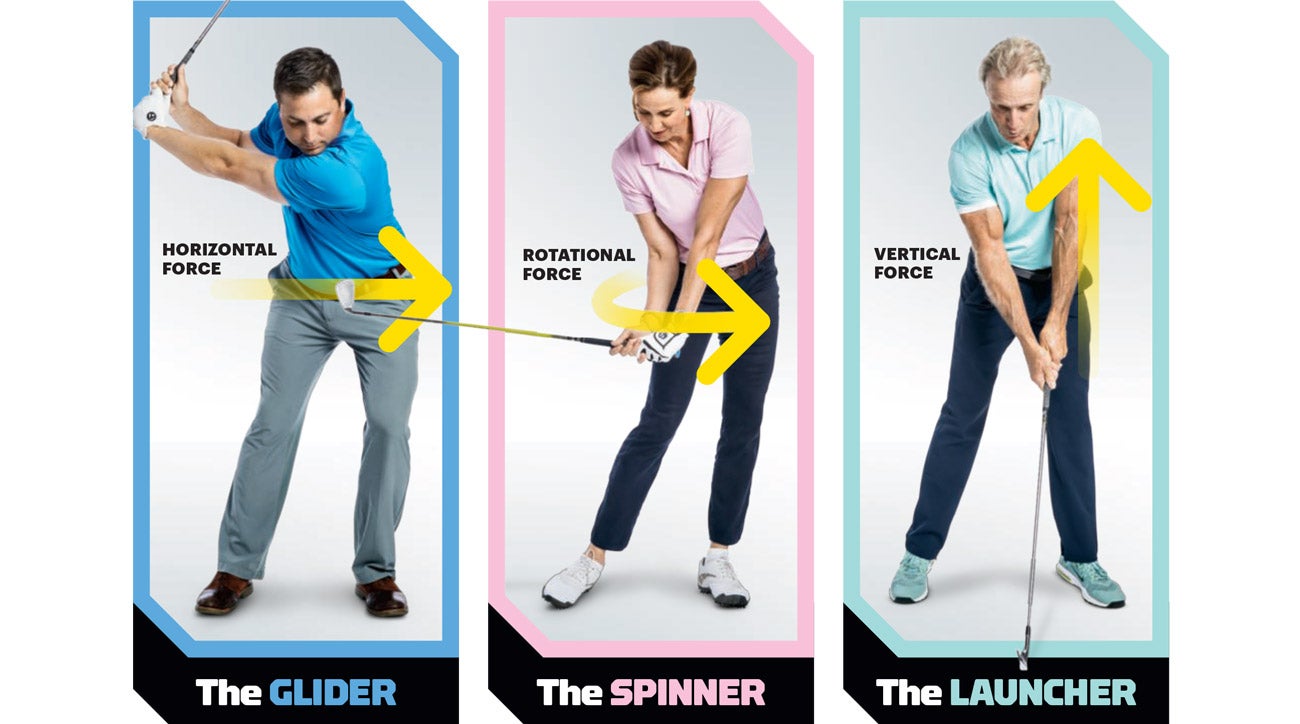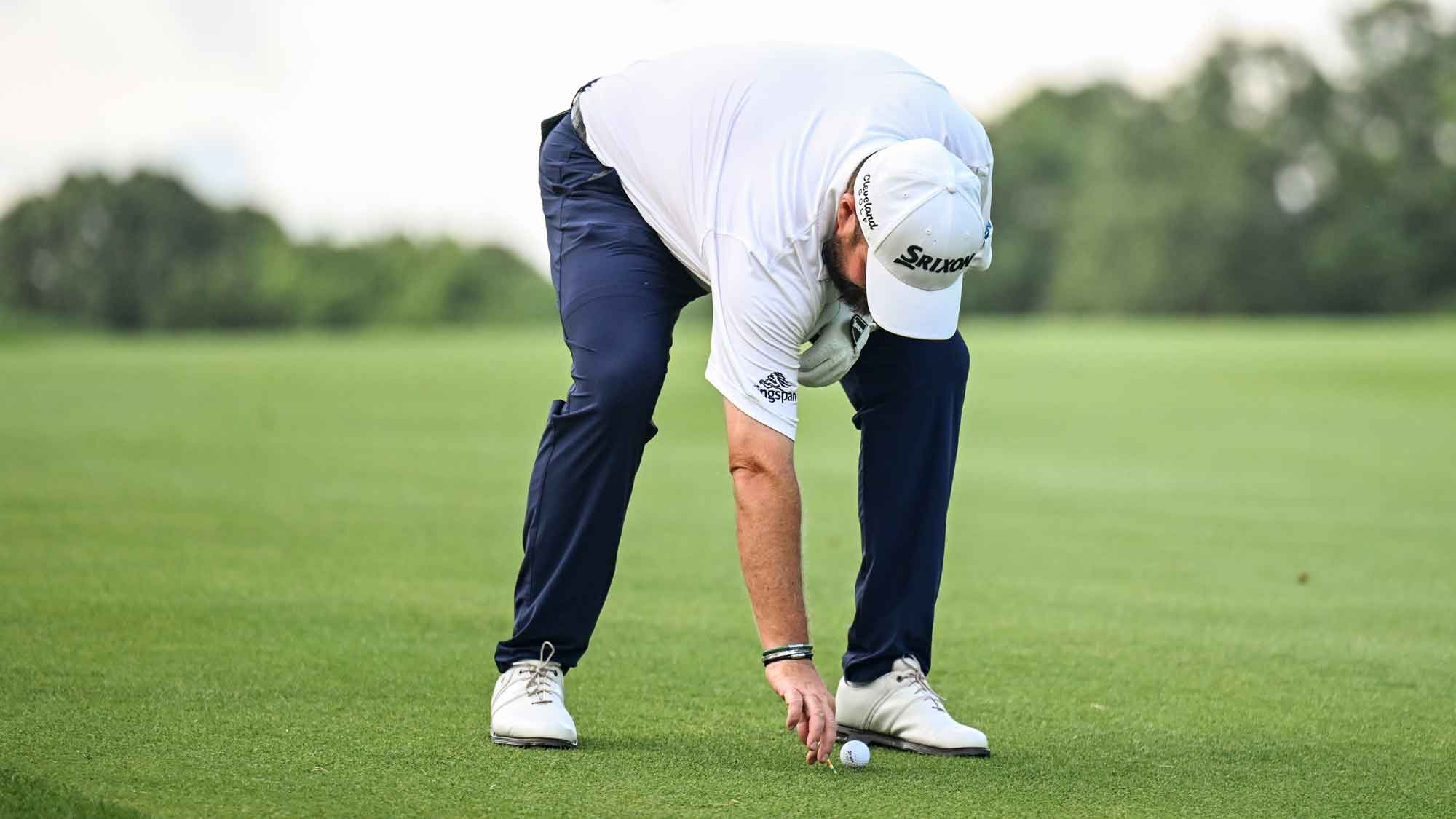By Mike Adams (Hamilton Farm G.C., Gladstone, N.J.) and Bernie Najar (Caves Valley G.C., Owings Mills, Md.); Edited by David DeNunzio
We’ve spent the last three years measuring the way golfers—touring pros and players just like you—use the ground to create power on the downswing. With the help of Scott Lynn, Ph.D, and Swing Catalyst’s 3-D Motion Plate, we’ve gathered data from thousands of swings that proves what instructors have always sensed: Golfers create speed in varying ways.

The core foundation of our research is that every player uses some combination of horizontal, rotational and vertical force to deliver the club into impact (photos, above). Depending on your body type and athletic ability, however, you’re likely to prefer one force over the others, and building a swing around your natural “power source” can dramatically increase your swing speed (up to 25 mph in some cases). How? Get to know your body. The following tests provide the clues needed to unlock the power hitter within. In 10 minutes you’ll learn if you prefer to Glide, Spin or Launch—that is, use horizontal, rotational or vertical force to whip the club through impact. Class is in session. Meet the new and improved you.
TEST 1: Wingspan

You can practice a swing move until you’re blue in the face, but if you’re not built to execute it, you’ll struggle. That’s why our first two tests are pure, static body assessments.
Do this: Stand tall with your arms stretched out, like the letter “T.” Ask a friend to measure your wingspan (fingertips to fingertips) and height. Compare the two measurements.
If your wingspan is greater than your height, you’re a candidate for GLIDING. Your long arms force you into a taller posture—not an ideal platform for LAUNCHING.
If your wingspan and height measurements are the same, you’re a candidate for SPINNING. As a general rule, the more “neutral” your test results, the more likely you’ll max out speed with spin.
If your height is greater than your wingspan, you’re a candidate for LAUNCHING. Your short arms force you to flex your knees more at address, necessitating “launch” through impact.
TEST 2: Forearm Length

Use a tape measure or alignment stick (as Mike is doing above) and compare the length of your right forearm to your right upper arm.
If your forearm is longer, you’re a candidate for GLIDING.
If your forearm and upper arm are the same length, you’re a candidate for SPINNING.
If your forearm is shorter than your upper arm, you’re a candidate for LAUNCHING.
TEST 3: Arm Swing

Decoded deep in your DNA is a natural swing shape, determined primarily by how your trailing arm likes to work. Discovering your natural right-arm action is critical for long-term success—it can only produce the efficient power you seek if you pair it with its lower-body-action counterpart, whether it’s GLIDING, SPINNING or LAUNCHING.
Do this: Stand at address with your palms together. Next, swing your right arm back, keeping your hands together. Stop at chest height.
If your right palm moves above your left as you swing back, you’re probably a LAUNCHER. Because your right arm likes to push down, you need to offset it through impact by LAUNCHING up.
If your left palm moves on top, you’re a GLIDER. You need a big shift toward the target to slot the club from this “under” position.
If your palms look like this, SPINNING provides your best route back to impact.
TEST 4: Pivot

Just as there are three basic right-arm motions, there are three basic ways to pivot. Each is equally efficient, as long as you match it with the correct lower-body action.
Do this: Hold a club across your thighs as you stand in your address posture. Now rotate in a mock backswing, keeping the club against your thighs.
If you remain centered as you rotate, you’re a SPINNER. If you shift back to your right leg, you’re a GLIDER, and if you shift into your front leg, you’re a LAUNCHER.
A GLIDER needs horizontal force on the downswing to move weight from the back foot to his front; otherwise, the shot may be caught thin. And since a player who shifts to the front foot while rotating is already “preloaded,” LAUNCHING up is the lone option to efficiently deliver the club to the ball.
TEST 5: Hip Speed

For the final test, crisscross alignment sticks at 45-degree angles to your target line, as shown. Run a third stick through your front belt loops. Straddle the center of the “X” formed by the sticks on the ground and, without a club, swing your right arm back and through, stopping just after impact. (We test this by having a student “slap” a padded mitt, as Bernie demonstrates above). The position of the alignment stick through your belt loops (call it Stick 1) relative to the one pointing to the left of the target on the ground (Stick 2) tells you how fast your hips move on a typical swing. As a general rule, the faster your hips move (that is, the more Stick 1 points left of the target than stick 2), the more you should take advantage of that speed and focus on SPINNING through impact. Slow-hip swingers (Stick 1 points more to the right than Stick 2) don’t have that luxury. That’s okay: Vertically LAUNCHING is just as powerful. If the sticks point in the same direction, score a point both for SPINNING and GLIDING.





